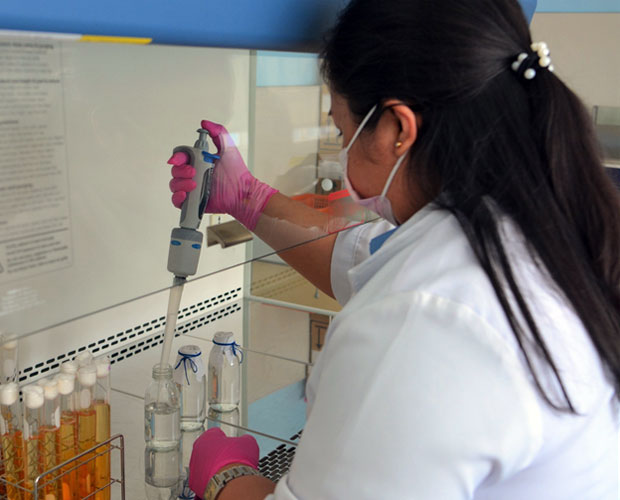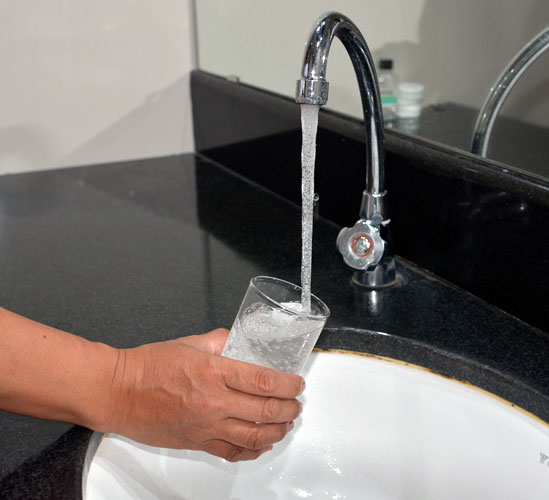MNWD Tap Water Fit for Direct Consumption
The Metropolitan Naga Water District (MNWD) is responsible for ensuring that the water flowing from the tap is safe, clean, and potable. Fact is, tap water in most areas of the MNWD service jurisdiction specifically within Naga City meet the criteria stipulated in the Philippine National Standard for Drinking Water (PNSDW) of 2017.
These standards are consistent with the improved framework for drinking-water safety promoted by the World Health Organization (WHO) comprised of three key components: health-based targets established by the authority; safely managed water systems (application of water safety plan); and, a system of independent surveillance.
To ensure the safety of MNWD’s tap water, seven guidelines were followed and met such as (1) measuring the quality; (2) water sampling and examination; (3) other modes of distribution of drinking-water; (4) evaluation of results; (5) classification of quality parameters; (6) quality assurance/quality control for water laboratories; and (7) water safety plan (WSP) and quality surveillance.
MNWD’s tap water goes through a relatively simple process on its journey from the underground water table to faucets and hydrants within its service coverage area using the methods of FILTRATION (in some areas where necessary) and CHLORINATION.
Filtration is a commonly used, physical, chemical, and in some instances, biological process of water treatment. The filtration process involves separation of suspended solids and impurities from water by passing it through porous media (1).
Meanwhile, chlorination is a process where chlorine is added to the drinking-water to kill or inactivate microorganisms, including harmful pathogens (2). Microorganisms such as bacteria, viruses, and protozoa are killed during the process, making tap water fit for human consumption.
MNWD performs chlorination at any point throughout the water treatment process. Each point of chlorine application will subsequently control a different water contaminant concern, thus, offering a complete spectrum of treatment from the time the water enters the treatment facility to the time it leaves.
Apart from the water treatment processes, MNWD also has its own laboratory equipped to run water quality tests such as Chlorine Residual Monitoring and Monthly Bacteriological Potability Testing; whereas request for Annual Physical and Chemical Test is submitted to the central office of the Department of Health.
Essentially, Chlorine Residual Test is administered by MNWD to determine the amount of remaining chlorine in water.
Chlorine Residual or the presence of free chlorine in drinking water indicates that: 1) a sufficient amount of chlorine was added initially to the water to inactivate the bacteria and some viruses that cause diarrheal disease; and, 2) the water is protected from recontamination during storage. The presence of free chlorine in drinking water is correlated with the absence of most disease-causing organisms, and thus is a measure of the potability of water (3).
Bacteriological Analysis on the one hand, is a method analyzing water to estimate the numbers of bacteria present and if needed, to find out what sort of bacteria they are. It is a microbiological analytical procedure which uses samples of water and from these determines the concentration of bacteria.
On the other hand, Physical Analysis indicates the properties detectable by the senses; whereas, Chemical Analysis is being conducted to test for impurity identification, trace analysis, material identification, moisture analysis and determining chemical composition.
Accredited since 2003, the MNWD laboratory conducts various tests in order to guarantee that all water sources deliver the right quality suitable for direct consumption. To date, MNWD has 28 pumping stations, 4 springs, and 3 reservoirs within its service jurisdiction, servicing 50, 258 active connections as of December 2018.
MNWD’s tap water is safe and healthy to drink. Choose drinking tap water as it has more stringent requirements for monitoring the water quality on a continuous basis over other sources. Also, MNWD’s tap water contains significant levels of nutrients particularly:
| Nutrients | Health Benefits |
| Calcium | Build and maintain strong bones |
| Chromium | Regulate blood sugar |
| Copper | Plays a role in energy production |
| Iron | The substance in red blood cells that carries oxygen from the lungs to transport it throughout the body |
| Magnesium | Helps maintain normal muscle and nerve function |
| Manganese | Necessary for normal brain and nerve function |
| Potassium | Helps the muscles contract, regulates body fluids, helps maintain healthy blood sugar and blood pressure levels |
| Sodium | Helps send nerve impulses and affects muscle function |
| Zinc | Needed for the proper growth and maintenance of the human body |
Indeed, it’s perfectly safe to drink tap water. Added to the quality of MNWD’s tap water is the healthy spring sources at the Mt. Isarog Natural Park (MINP). The MNWD’s commitment to employ necessary water treatments following strict procedures, conduct of regular tests, and compliance to standards and requirements guarantee that the water flowing straight from our faucet is clean, safe, and potable. (Auria S. Gonzales)
Sources:
(1) Sagara, J. STUDY OF FILTRATION FOR POINT-OF-USE DRINKING WATER TREATMENT IN NEPAL (199).
http://web.mit.edu/watsan/Docs/Student%20Theses/Nepal/Sagara2000.pdf
(2) World Health Organization. Principles and Practices of Drinking-water Chlorination (2017). http://apps.searo.who.int/PDS_DOCS/B5310.pdf
(3) Center for Disease Control and Prevention. . Chlorine Residual Testing Fact Sheet, CDC SWS Project. https://www.cdc.gov/safewater/publications_pages/chlorineresidual.pdf
MNWD LABORATORY. Ms. Zandra S. Gutierrez, MNWD’s Medical Technologist II doing one of the tests to the water sample.
TAP WATER. MNWD assures the public that tap water is definitely safe and healthy to drink considering the entire process and stringent measures that the District is following to ensure safety and potability.


